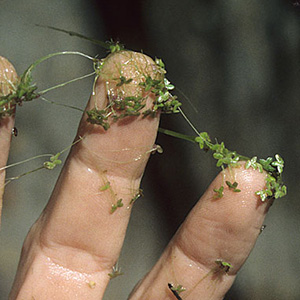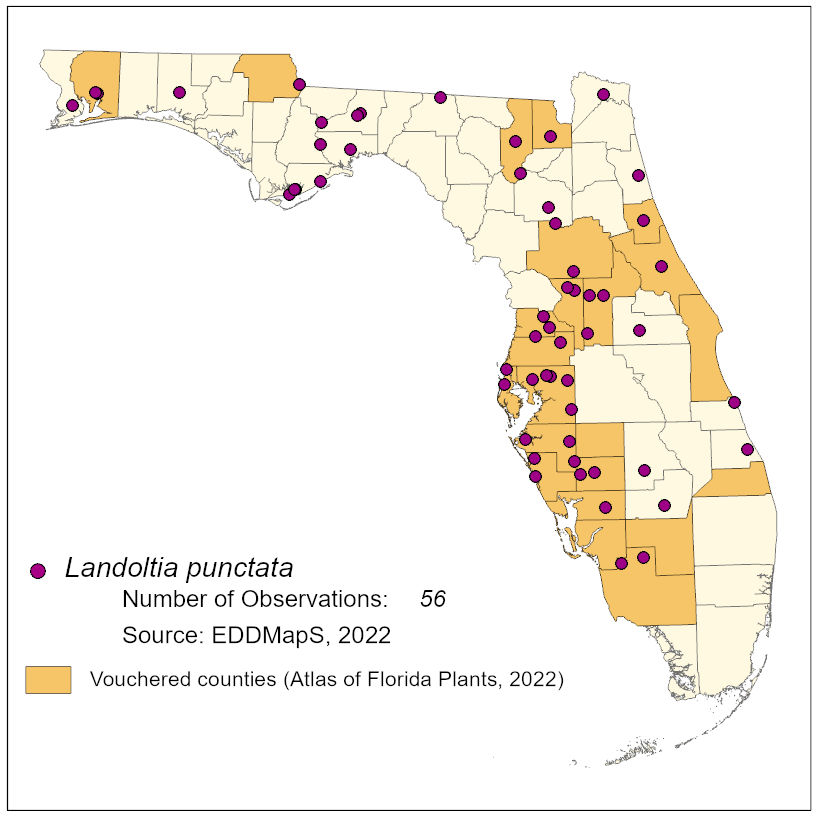Common Name: dotted duckweed
Family: Araceae
Common Synonyms: Spirodela punctata
USDA Hardiness Zone: 11- 5
Growth Habit: Aquatic, Forb/Herb
Origin: Australia and southeast Asia
FISC Category: 2
FDACS Listed Noxious Weed: No
Introduction Date: Earliest Florida herbarium specimen from 1958
IFAS Assessment:

Tiny free-floating aquatic plant made up of individual fronds with 2-4 fine roots. Mature fronds of Landoltia punctata appear 1.5 to 2 times longer than wide, with widths measuring from 1-3 mm. Fronds intense green and range from egg-shaped to kidney-shaped, and often sparkle in the sunlight because of waxy cuticle.
Slow-moving waters, swamps, canals, ponds, irrigation ditches
From IFAS: Landoltia punctata looks very similar to the native giant duckweed, Spirodela polyrhiza. It is frequently found growing in rivers, ponds, lakes, and sloughs nearly throughout the state. Dotted duckweed is native to the Old World but escaped from cultivation. It blooms all year (Wunderlin, 2003).

NA
IFAS, Assessment of Non-Native Plants in Florida's Natural Areas. https://assessment.ifas.ufl.edu/assessments/landoltia-punctata/. Accessed June 13, 2017.
IFAS, Center for Aquatic and Invasive Plants. 2013. https://plants.ifas.ufl.edu/plant-directory/landoltia-punctata/. Accessed June 13, 2017.
C.C. Jacono. 2017. Landoltia punctata. USGS Nonindigenous Aquatic Species Database, Gainesville, FL. https://nas.er.usgs.gov/queries/FactSheet.aspx?speciesID=1116. Accessed June 13, 2017.
U.S. Army Corps of Enginers. 2012. Aquatic Herbicides. http://glmris.anl.gov/documents/docs/anscontrol/AquaticHerbicides.pdf. Accessed June 13, 2017.